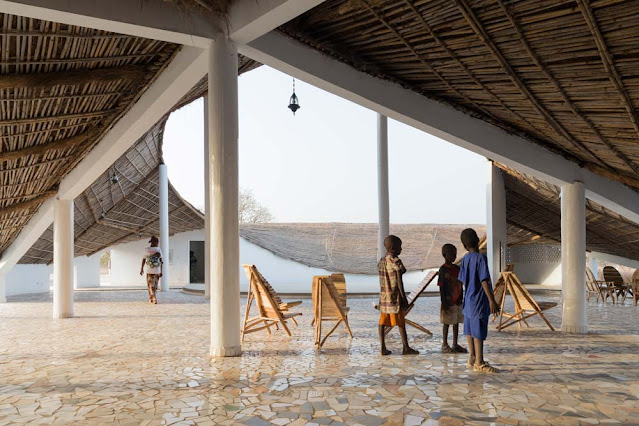Toshiko Mori Architect
Toshiko Mori Architect: Observations
Cristina Steingräber (Editor), with texts by Toshiko Mori, Landon Brown, Charles Burke, Nicolas Fox Weber, and Andres Lepik
ArchiTangle, April 2020Hardcover | 9-1/2 x 12-1/4 inches | 240 pages | 396 illustrations | English | ISBN: 978-3966800044 | 48.00 €
PUBLISHER'S DESCRIPTION:
Toshiko Mori is a New York-based architect and Professor in the Practice of Architecture at the Harvard University Graduate School of Design for many years. As a long-time member of the World Economic Forum’s Global Agenda Council on the Future of Cities, Mori led research and inquiry into sustainable architecture, enhancing cities’ livability, and creating efficient urban services. Mori is also on the board of Dassault Systems, a company connecting technology to environment and life science. And she has founded the platform VisionArc, a think tank dedicated to exploring the role of design within complex social and environmental issues. This book will focus on TMA’s projects based on research, and the impact of socially valuable projects to society. The book illustrates how the observation of the architect operates as opposed to how the imagination of the architect manifests itself. Different chapters in the book are describing various ways of approaching the task of observation. Seven chapters are divided into specific projects and provide a look at the hidden thought processes that can take place behind the ideas, solutions, and physical manifestations or architecture. Presented projects include the Portable Concert Hall, called Paracoustica, which is an ongoing nonprofit work to come up with an affordable and shareable concert hall among many constituents in remote and underserved community; the Novartis Institutes for BioMedical Research focusing on socialization among scientists as a new model of work that promotes further discovery and teamwork. And i.e. the research on the role of libraries in the future using the example of the Brooklyn Public Library Central Branch. Another chapter is dedicated to the vernacular typology development in Senegal with the Albers Foundation, and the research on social spaces for collaborative educational environments.
Toshiko Mori is the founding principal of Toshiko Mori Architect PLLC, and she is the Robert F. Hubbard Professor of the Practice of Architecture at the Harvard Graduate School of Design (GSD).
REFERRAL LINKS:
My first exposure to the work of architect Toshiko Mori was the Issey Miyake Pleats Please store on a corner in SoHo, seen on my first trip to New York City, in the late 1990s. Although small, the project made a big impression through its glass storefront, which was hazy when seen at an angle but clear when seen straight on. The design, since changed with the whims of fashion, then indicated the architect's interest in material exploration. Most recently, in my duties curating the U.S. Building of the Week feature on World-Architects.com, I included Mori's Thread, an artists' residency and cultural center in Sinthian, Senegal, during a year when I focused the feature on overseas buildings designed by American architects (Toshiko Mori Architects is based in NYC). This later project saw the firm continuing material exploration, but with bamboo and sun-baked brick. But it heralded something new: an appreciation of the vernacular and an intelligent response to climatic and social concerns. Thread — and Fass, the adjacent school that followed a few years later — has received a fair amount of press, and I think the pair will define Mori's legacy.
Thread and Fass comprise one of the seven chapters in Observations, an unconventional monograph on TMA, the first I've seen on her firm since the first, the eponymous monograph published in 2008. Fittingly, one of the other chapters is devoted to projects and material research, focusing on projects much more recent than Pleats Please but indicating that her preference for glass has not abated. Of the remaining five chapters, the other "must" is about material research through exhibitions, most of which TMA has designed for the Cooper Hewitt in New York. The other four chapters don't hold as much interest for me, even though one of them details VisionArc, the think tank she founded in 2009 "dedicated to exploring the role of design within complex social and environmental issues." VisionArc is probably the most ambitious thing to come out of TMA, and it just might be the thing Mori hopes will shape her legacy, but I'm not convinced that the output of VisionArc is any more impactful than Thread and other TMA buildings. And if the VisionArc website is any indication, the think tank has done little to nothing since 2016.
VisionArc is directed by Landon Brown, who is one of five people contributing texts to Observations. Each chapter begins with an essay, most by Mori, some previously published, that explains the projects and explorations that follow. The chapters give the book a flow, but with them ranging from ten to sixty pages, and with them focusing on individual projects in detail or groups of them briefly, Observations feels more like an idea book than a traditional monograph. Thread and Fass, for instance, are the only buildings explained at length in both words in and images, with photos by Iwan Baan as well as drawings. Projects elsewhere in the book are given primarily photos, with drawings serving to elucidate the material elements or other areas of interest.
The "observations" of the book's title revolve around infrastructure, which is used throughout the book in its widest meaning and therefore applies to just about everything, from architectural details to cultural institutions. If an intellectual exploration of infrastructure is what has led to TMA's buildings, be it Thread and Fass or the houses and other stateside buildings, then I'm all for it. But in these pages I would have appreciated more information on more projects; even the project details in the back of the book omit completion dates, locations, and other information that historians and scholars need. For more architecture and less "observations," one should consider the recently published issue of a+u devoted to Mori.
SPREADS:







